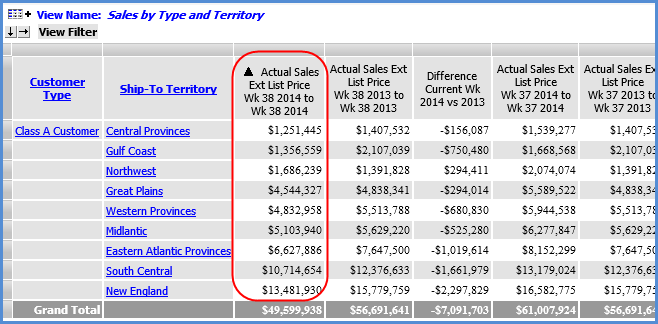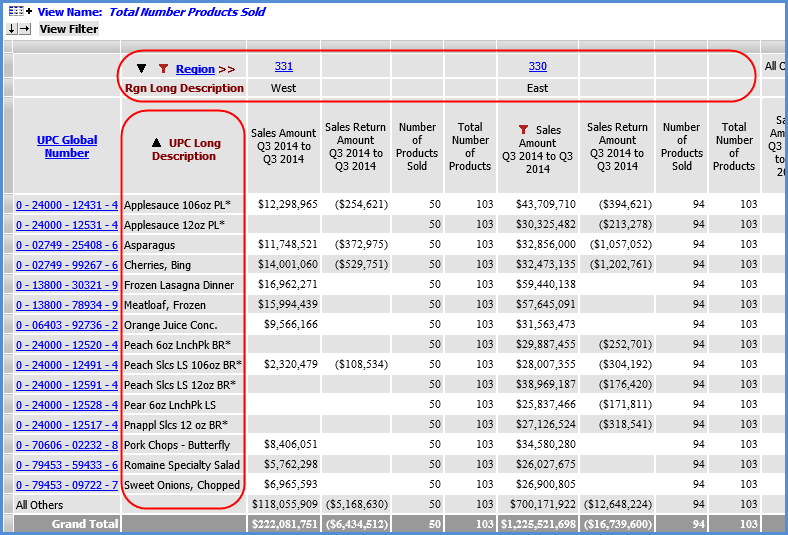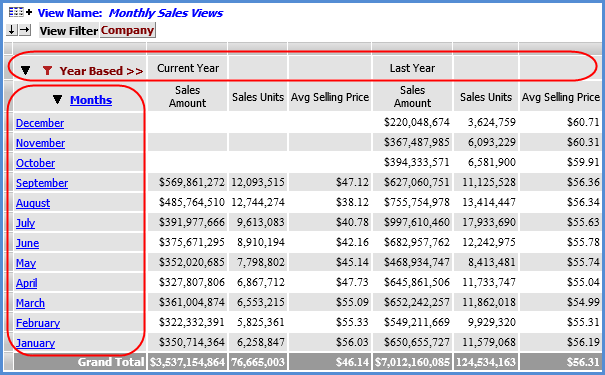
Sorts are a means of sequencing your data in a way that is most meaningful to you. Descending and ascending sorts can be applied to a level, an attribute relationship for a level, a measure item, or totals. You can combine sorts with filters to achieve a view of data that best fits your particular business needs.
Stratum.Viewer will sort measure data numerically. Attribute relationships defined as a number will also be sorted numerically. The following view has an ascending sort on the first measure item.

The next view has a descending sort on the Prod Current List Price attribute relationship. It’s a numeric sort because the attribute relationship was set up to have its data treated as numbers in this view.

Stratum.Viewer will sort most non-calendar based objects alphanumerically. Attribute relationship designated as text (default) will be sorted alphanumeric. The following view has a descending sort on the Region level in columns and ascending sort on the UPC Long Description attribute relationship in rows. The sort on the attribute relationship is treated alphanumerically in this example because it was set up to have its data treated as text in this view.

Stratum.Viewer will sort calendar based objects according to their calendar order. Calendar based objects are objects related to time, such as a Year or Months time level and their attribute relationships. In this view, descending sorts exist on the Year Based level in columns and Months level in rows.
